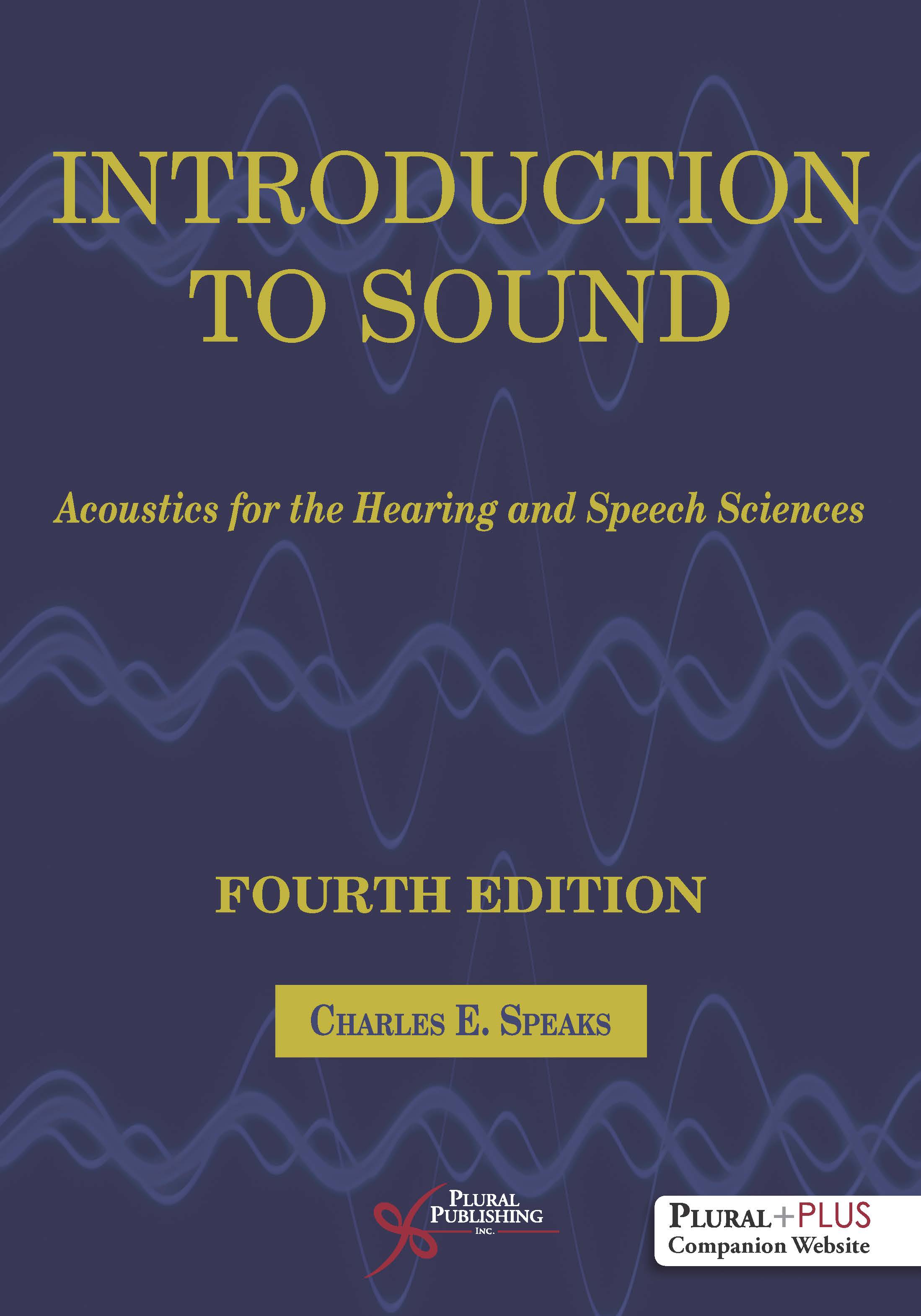
Introduction to Sound: Acoustics for the Hearing and Speech Sciences.
Fourth Edition
Charles E. Speaks
Details: 448 pages, Two-Color, Hardcover, 7" x 10"
ISBN13: 978-1-94488-349-2
© 2018 | Available
A new edition is available.
The beloved classic textbook, Introduction to Sound: Acoustics for the Hearing and Speech Sciences, is back in a new fourth edition and continues its aim to teach fundamental concepts of acoustics to students in communication sciences and disorders and related disciplines. Students in speech, language, and hearing science must have a thorough understanding of the elements of acoustics before they can successfully embark on more advanced study of both normal and disordered human communication.
The textbook is known for how acoustical concepts have been made understandable for all students, not just those who are already grounded in mathematics and physics. The book is appropriate for undergraduate courses in acoustics for speech and hearing and hearing science, as well as related courses in audiology.
New to the Fourth Edition
- New chapter on room acoustics (Chapter 10) summarizes relevant concepts for classrooms as well as discusses principles and methods for assessing speech intelligibility/understanding
- Chapter 3 on acoustic impedance is now a freestanding chapter
- Each chapter includes Practice Problems
- Several other chapters have been reorganized to achieve an improved focus and more logical flow of concepts
- Now includes a Glossary of key terms
- Information has been made more concise
- Access to a PluralPlus companion website that includes resources for both students (practice problems) and instructors (PowerPoint slides and related links)
- Availability of 17 animations on the web to illustrate, in slow motion, elements of acoustics that are ordinarily too fast to visualize
Reviews
"This is an extraordinary book. It is the essential resource on the nature of sound and its measurement. The writing is clear and concise. Difficult concepts in acoustics are explained in easily understandable form. The 4th edition adds an excellent overview on the important topic of room acoustics. Heartily recommended for everyone in the speech and hearing sciences."
—James Jerger, PhD
"The fourth edition of Introduction to Sound by Charles Speaks continues to be the finest introductory textbook for speech and hearing students beginning their studies in acoustics. I have used this book since its first edition and have found it to be a valuable teaching tool, both in and out of the classroom. The book covers a wealth of information relative to basics acoustics, yet does not require students to have an extensive background in mathematics. Speaks writes in a style that students find easy to follow and comprehend. The new chapter on room acoustics is a welcome addition. The Practice Problems at the end of each chapter are comprehensive and logically follow the material in each chapter. The answers provided at the back of the book are a terrific learning tool, and provide students immediate feedback relative to the material they have learned."
—Larry Small, PhD, Bowling Green State University, OH, USA
"As Speaks says, a good grounding in basic acoustic concepts is a critical element in understanding audiological practice and this book would make an excellent core text in education. It may seem less accessible to an individual reader coming to the subject without a physics background, but Speaks has obviously used his experience of teaching the subject to write in an admirably clear manner. His descriptions of basic concepts should be readily understandable by all, and his use of highlights and ‘frequently misunderstood concepts’ is helpful in grasping key points. ...Inevitably, the text becomes more mathematical, but Speaks describes logarithms and decibels in an accessible manner with an excellent description of why two equal sound sources increase the sound pressure level by 3dB, which is frequently misunderstood. Chapter 10, ‘Room Acoustics’, is a welcome addition because this is one of the more accessible areas of acoustics that can be readily applied in clinic, e.g. in understanding the effect of acoustics on speech intelligibility. ...I believe this is one of the best-written and accessible texts in the subject and would recommend it as a core text for education and those interested in developing understanding."
—Richard Windle, Senior Audiologist, Royal Berkshire NHS Foundation Trust, UK in ENT & Audiology News, March 2019
Preface to the First Edition
Preface to the Second Edition
Preface to the Third Edition
Preface to the Fourth Edition
Acknowledgments
Chapter 1. The Nature of Sound Waves
Properties of the Transmitting Medium
Properties of the Sound Source
Sound Source Acting on a Medium
Fundamental Physical Quantities
Derived Physical Quantities
Vibratory Motion of a Spring-Mass System
The Pendulum: An Example of Slow-Motion Vibration
Proportionality
Sound Wave Propagation
Types of Wave Motion
Sound Waves
Transfer of Energy
Notes
Frequently Misunderstood Concepts
Practice Problems
Chapter 2. Simple Harmonic Motion
The Waveform
The Concept of Simple Harmonic Motion
Dimensions of the Sine Wave
Notes
Frequently Misunderstood Concepts
Practice Problems
Chapter 3. Acoustic Impedance
Review of Simple Harmonic Motion
Damping
Acoustic Impedance
Summary
Notes
Practice Problems
Chapter 4. Logarithms and Antilogarithms
The Concept of Logarithms and Antilogarithms
Scales of Measurement
More on Exponents
Antilogs and Logs
Procedures for Solving Log and Antilog Problems
Notes
Practice Problems
Chapter 5. Sound Intensity and Sound Pressure: The Decibel
Absolute and Relative Measures of Acoustic Power
Sound Intensity
The Decibel
Sound Pressure
The Relation Between dB IL and dB SPL
Units of Measure for Pressure
Conversion from One Reference to Another
Combining Sound Intensities from Independent Sources
Summary of Decibels for Sound Intensity and Sound Pressure
Notes
Frequently Misunderstood Concepts
Practice Problems
Chapter 6. Complex Waves
Fourier's Theorem
Periodic Waves
Aperiodic Waves
Waveform and Spectrum
Examples of Complex Sound Waves
Measures of Sound Pressure for Complex Waves
Signal-to-Noise Ratio in dB
Notes
Frequently Misunderstood Concepts
Practice Problems
Chapter 7. Resonance and Filtering
Resonance
Resonance and Filter Curves
Acoustic Impedance and Resonance
Frequency-Selective Systems: Filters
Parameters of a Filter (System Transfer Function)
Idealized Rectangular Filter
Types of Filters
Specification of Level at the Output of Filters
Another Look at Selected Types of Noise
Notes
Frequently Misunderstood Concepts
Practice Problems
Chapter 8. Distortion
Frequency Distortion
Amplitude Distortion
Transient Distortion
Practice Problems
Chapter 9. Sound Transmission
A Free, Unbounded Medium
The Inverse Square Law
Reflection
Refraction
Diffraction
Other Phenomena in Sound Transmission
Notes
Frequently Misunderstood Concepts
Practice Problems
Chapter 10. Room Acoustics
Absorption
Absorption and Reflection
Room Acoustics
Speech Intelligibility: An Overview
Psychophysical/Behavioral Assessment of Speech Understanding
Physical/Predictive Assessment of Speech Understanding
The Design/Redesign Team
A Closing Comment
Notes
Practice Problems
Glossary
Answers to Practice Problems
Alphabetical Listing of Selected Equations
References
Index
Purchasers of this book receive complimentary access to supplementary materials hosted on a PluralPlus companion website. The site includes resources for both students (practice problems) and instructors (PowerPoint lecture slides and related links).
Student Materials:
- Practice problems
- Figures
- Animations
Instructor Materials:
- PowerPoints
- Figures
- Animations
- Availability of 17 computer animations on the web to illustrate, in slow motion, elements of acoustics that are ordinarily too fast to visualize. No access code required.
To access the materials, log in to the website using the URL located inside the front cover of your copy of Introduction to Sound, Fourth Edition.
STUDENTS:
To access the student materials, you must register on the companion website and log in using the access code located inside the front cover of your textbook.
INSTRUCTORS:
To access the instructor materials, you must contact Plural Publishing, Inc. to be verified as an instructor and receive your access code.
Email: instructormaterials@pluralpublishing.com
Tel: 866-758-7251 (toll free) or 858-492-1555
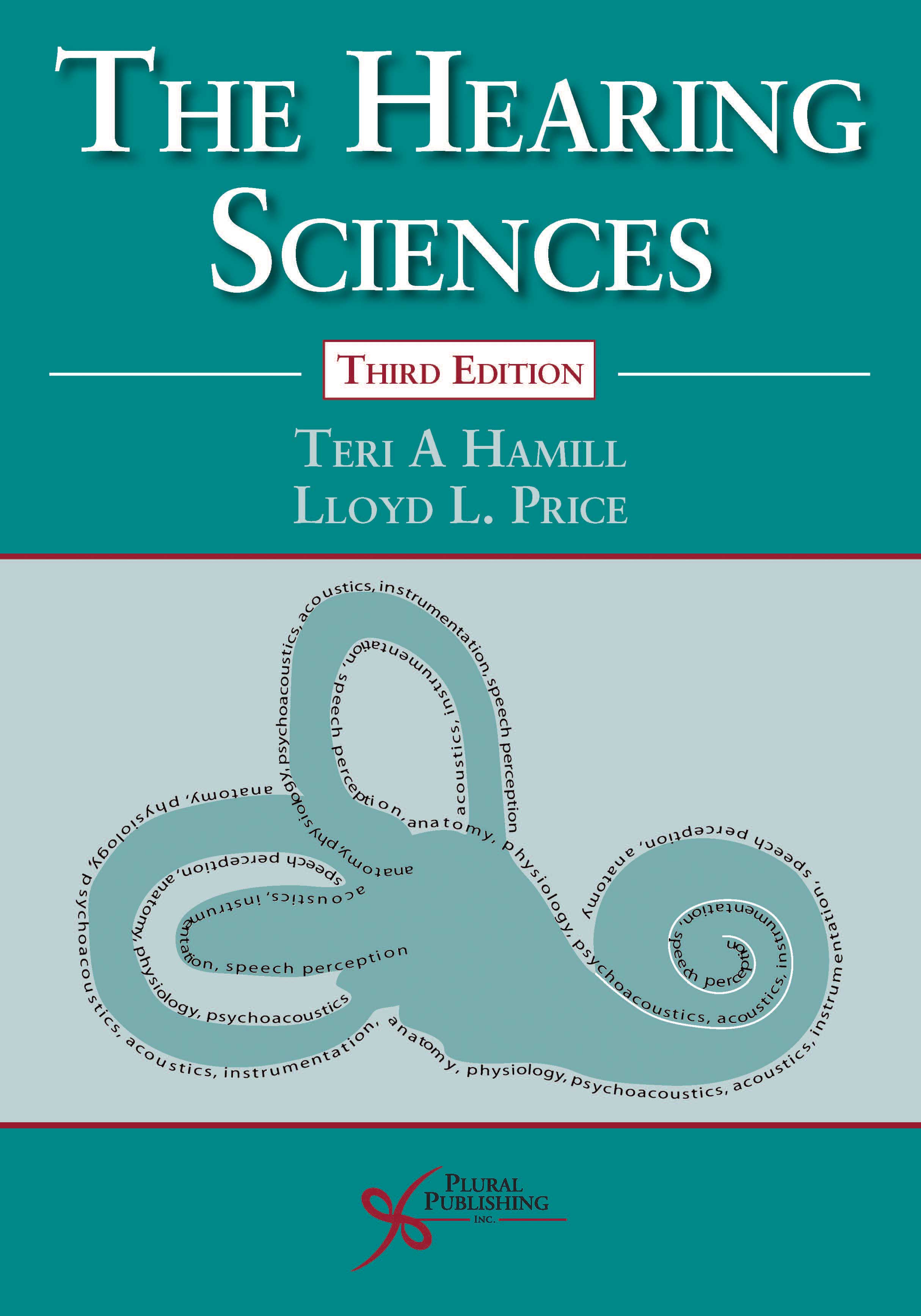
The Hearing Sciences
Third Edition
Teri A. Hamill, Lloyd L. Price
Details: 637 pages, B&W, Softcover, 8.5" x 11"
ISBN13: 978-1-94488-363-8
© 2019 | Available
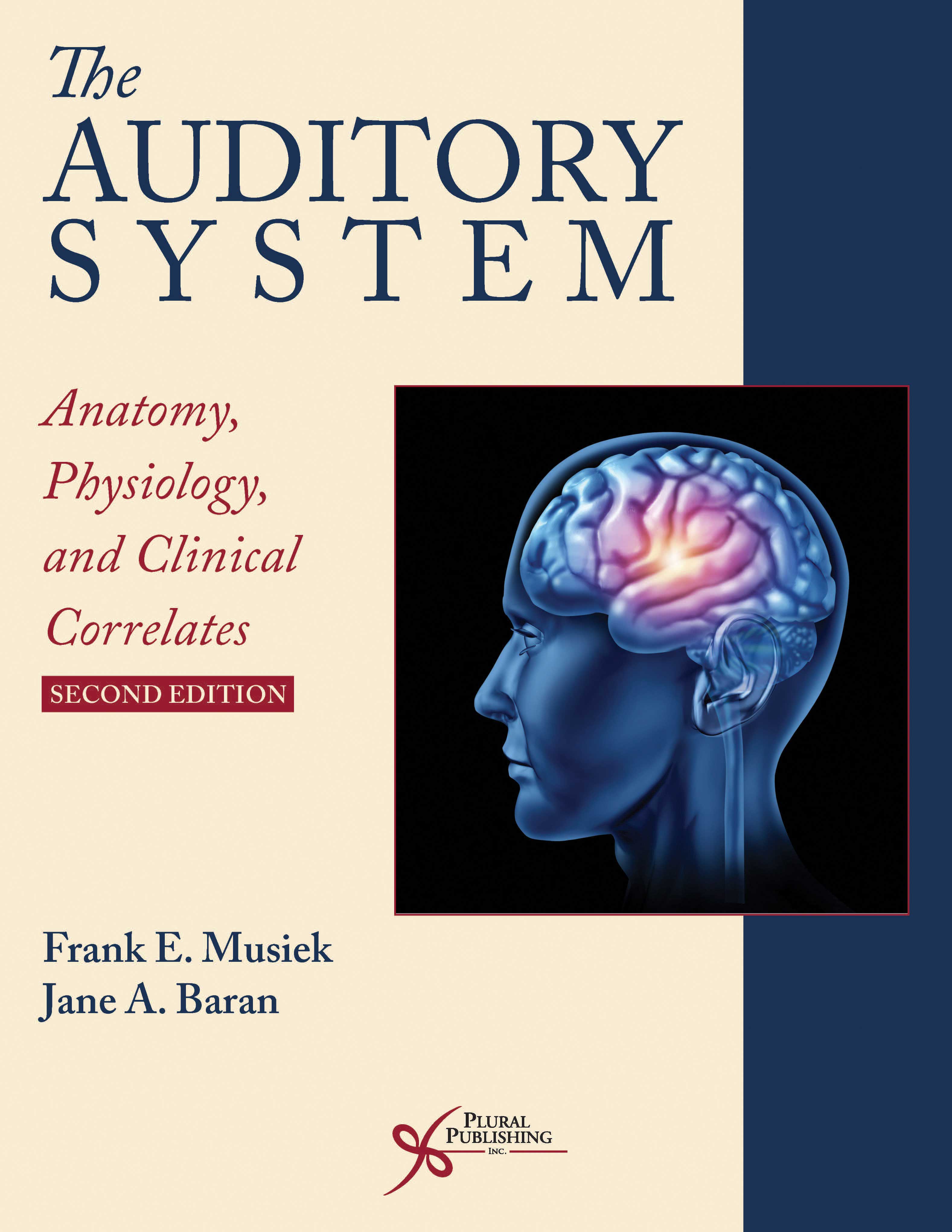
The Auditory System: Anatomy, Physiology, and Clinical Correlates
Second Edition
Frank E. Musiek, Jane A. Baran
Details: 487 pages, Full Color, Hardcover, 8.5" x 11"
ISBN13: 978-1-94488-300-3
© 2020 | Available
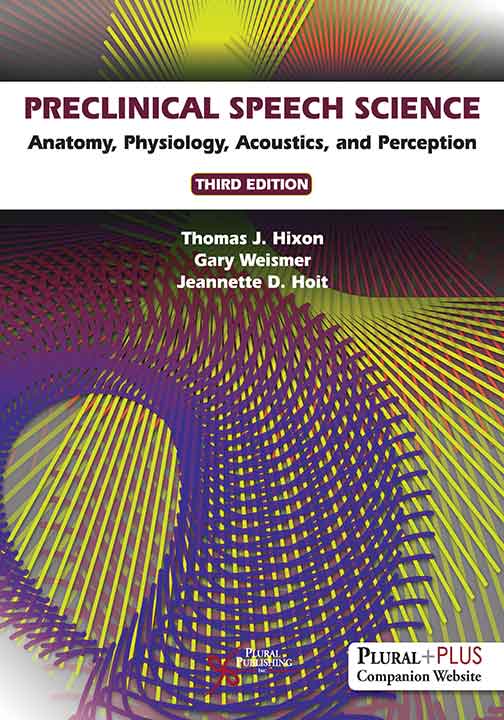
Preclinical Speech Science: Anatomy, Physiology, Acoustics, and Perception
Third Edition
Thomas J. Hixon, Gary Weismer, Jeannette D. Hoit
Details: 728 pages, Full Color, Hardcover, 8.5" x 11"
ISBN13: 978-1-63550-061-5
© 2020 | Available
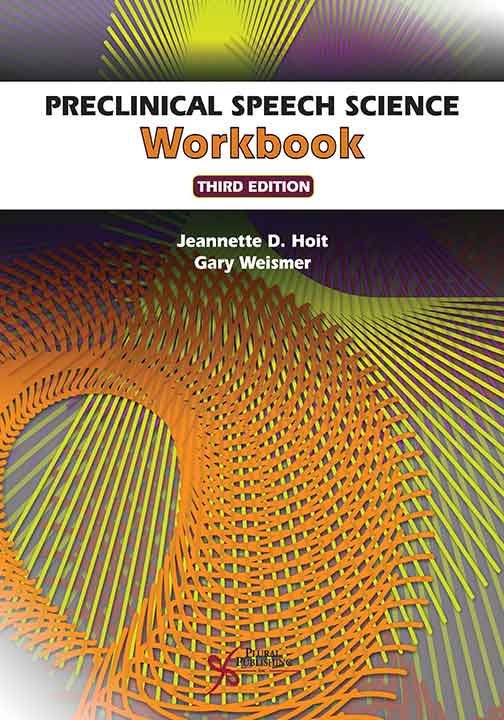
Preclinical Speech Science Workbook
Third Edition
Jeannette D. Hoit, Gary Weismer
Details: 436 pages, B&W, Spiral Bound, 8.5" x 11"
ISBN13: 978-1-63550-063-9
© 2020 | Available
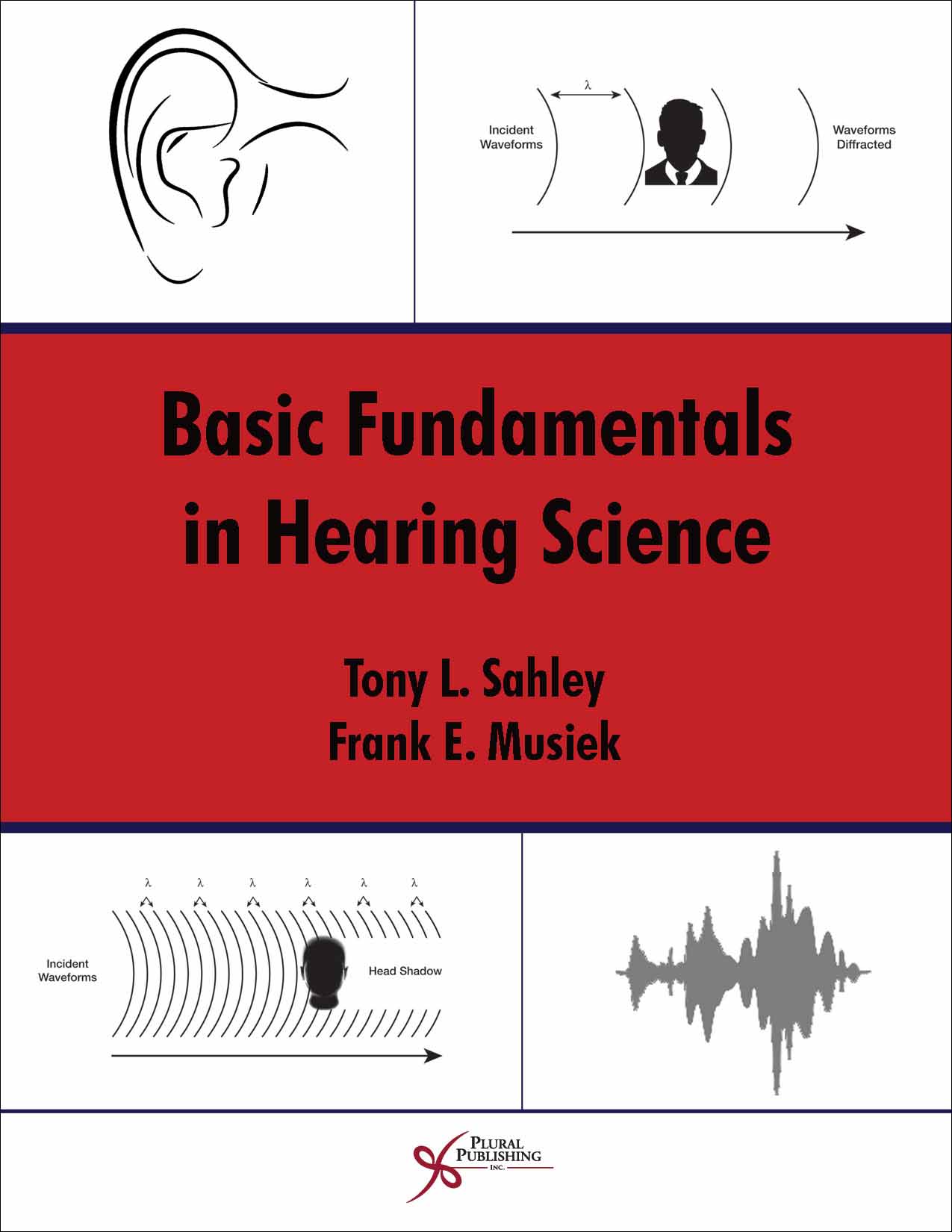
Basic Fundamentals in Hearing Science
First Edition
Tony L. Sahley, Frank E. Musiek
Details: 704 pages, B&W, Hardcover, 7" x 10"
ISBN13: 978-1-59756-549-3
© 2016 | Available
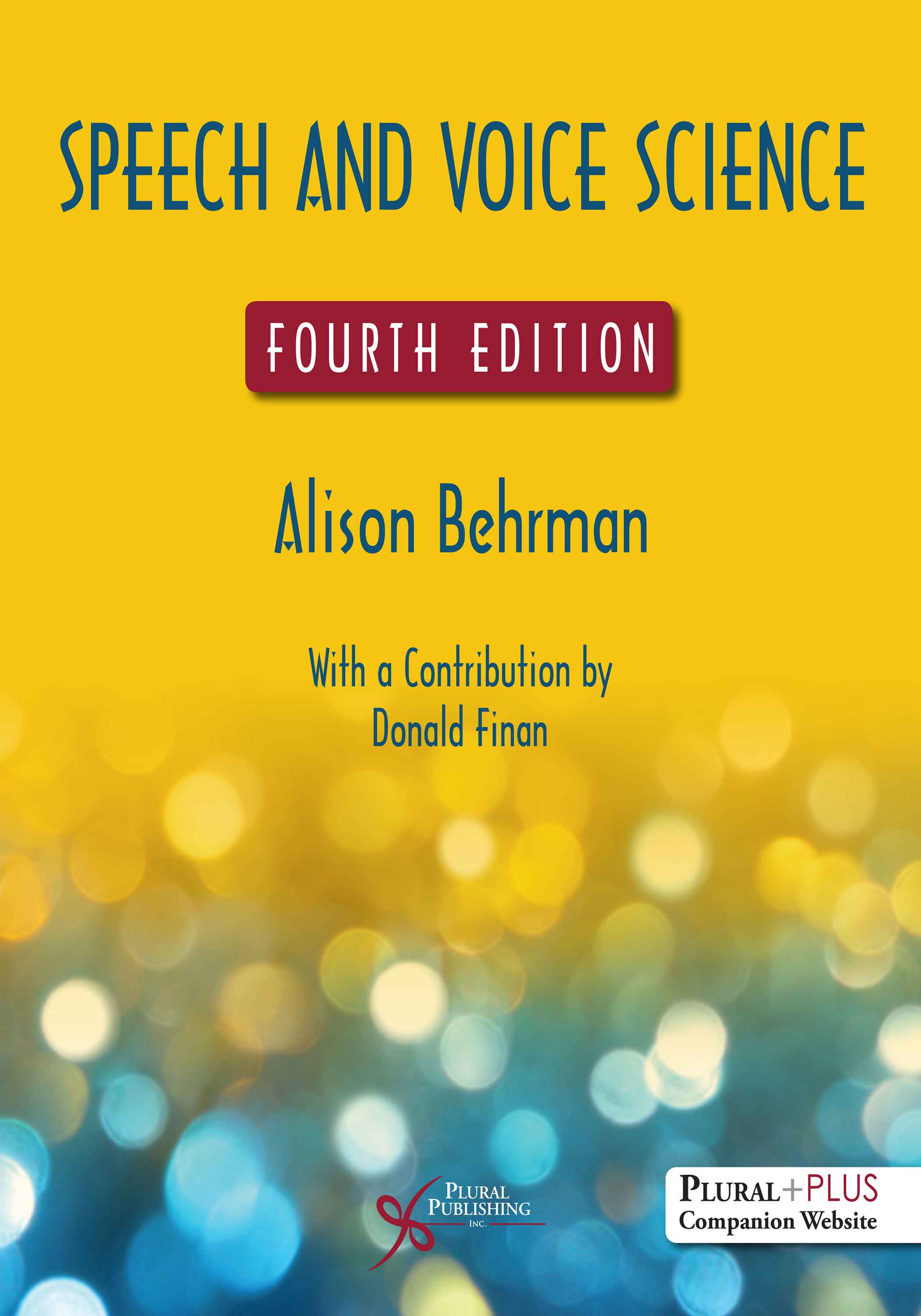
Speech and Voice Science
Fourth Edition
Alison Behrman
Details: 517 pages, 2-Color, Softcover, 8.5" x 11"
ISBN13: 978-1-63550-322-7
© 2023 | Available
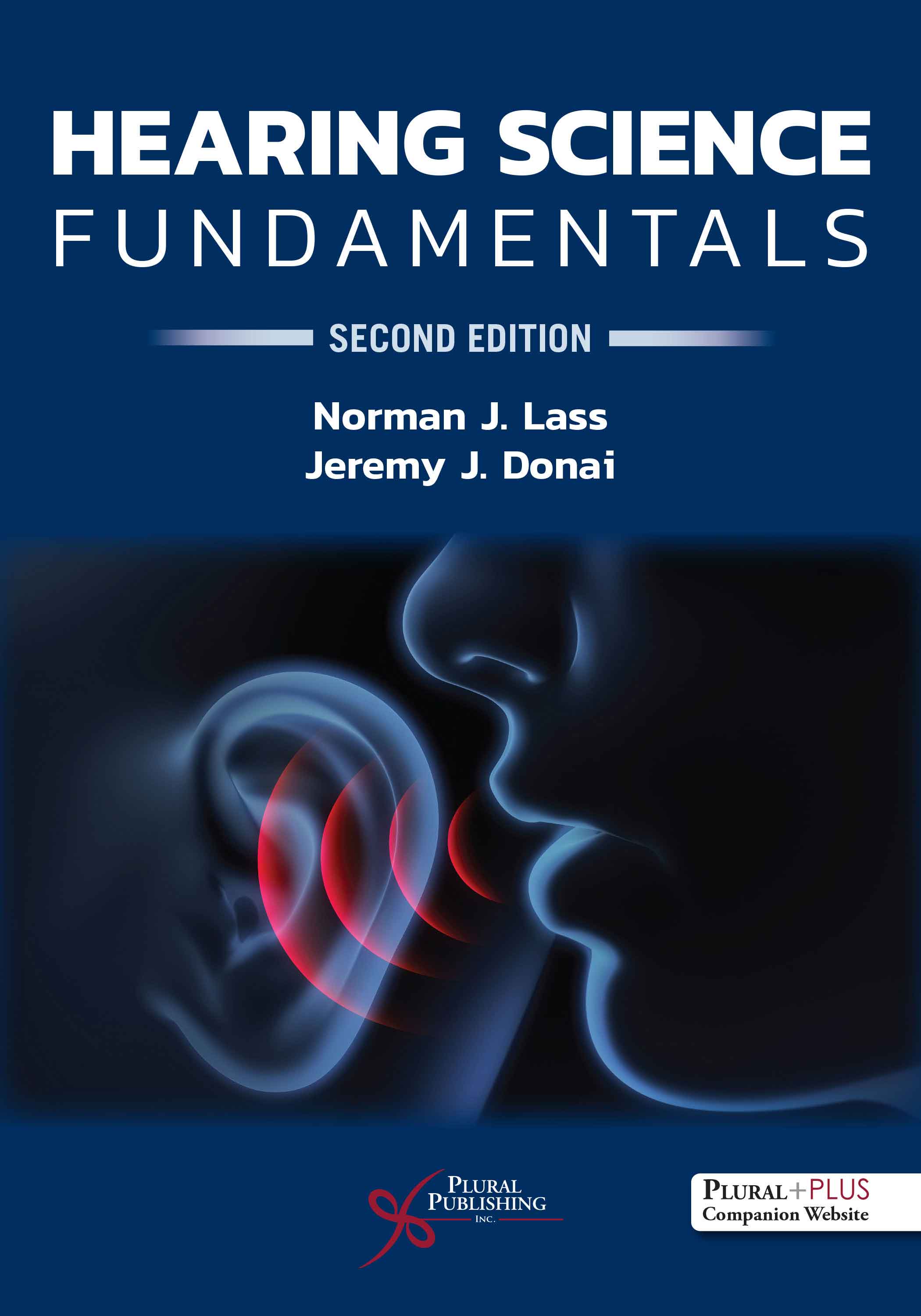
Hearing Science Fundamentals.
Second Edition
Norman J. Lass, Jeremy J. Donai
Details: 370 pages, 2-Color, Softcover, 7" x 10"
ISBN13: 978-1-63550-328-9
© 2023 | Available
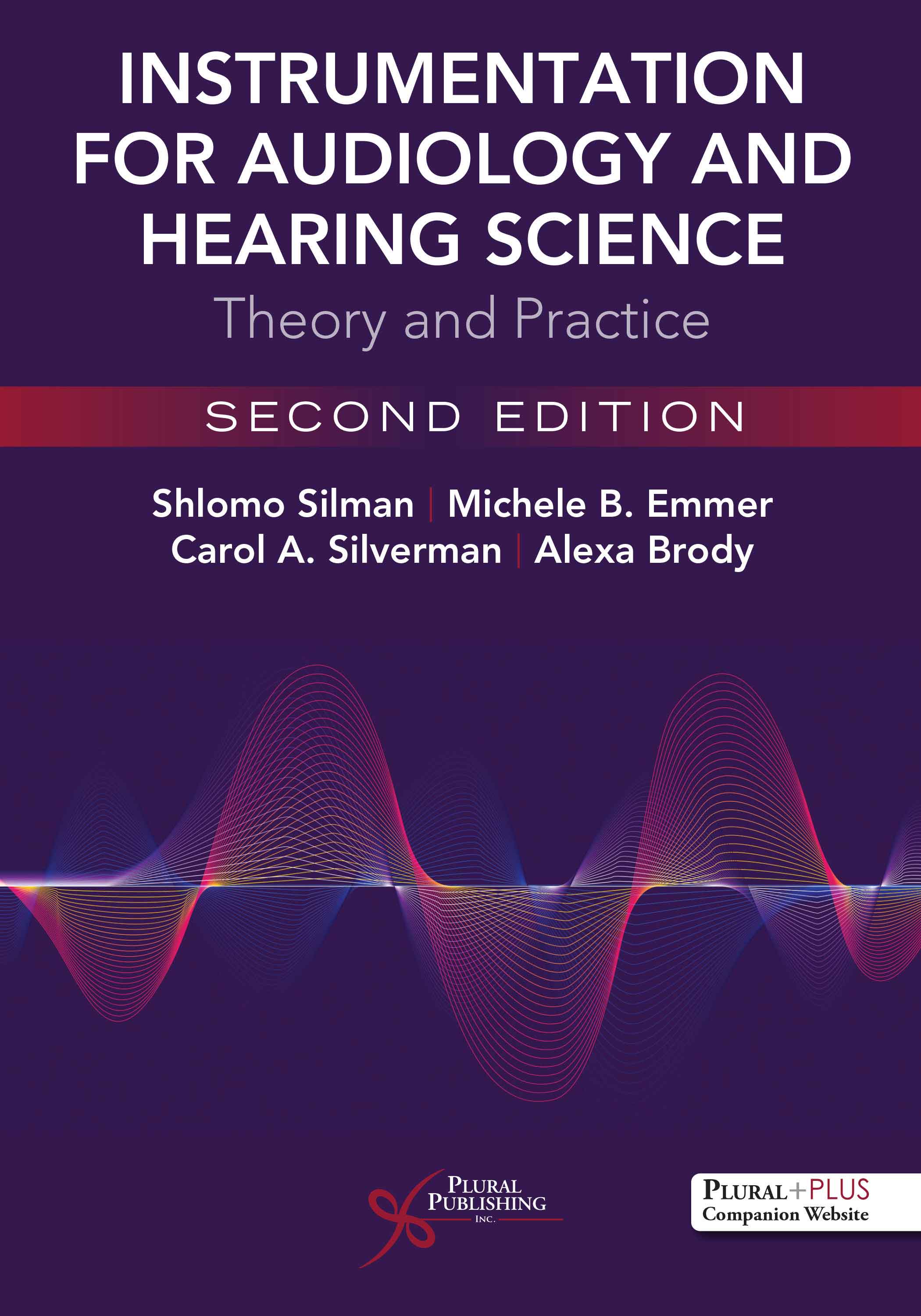
Instrumentation for Audiology and Hearing Science: Theory and Practice
Second Edition
Shlomo Silman, Michele B. Emmer, Carol A. Silverman, Alexa Brody
Details: 338 pages, B&W, Softcover, 7" x 10"
ISBN13: 978-1-63550-226-8
© 2023 | Available
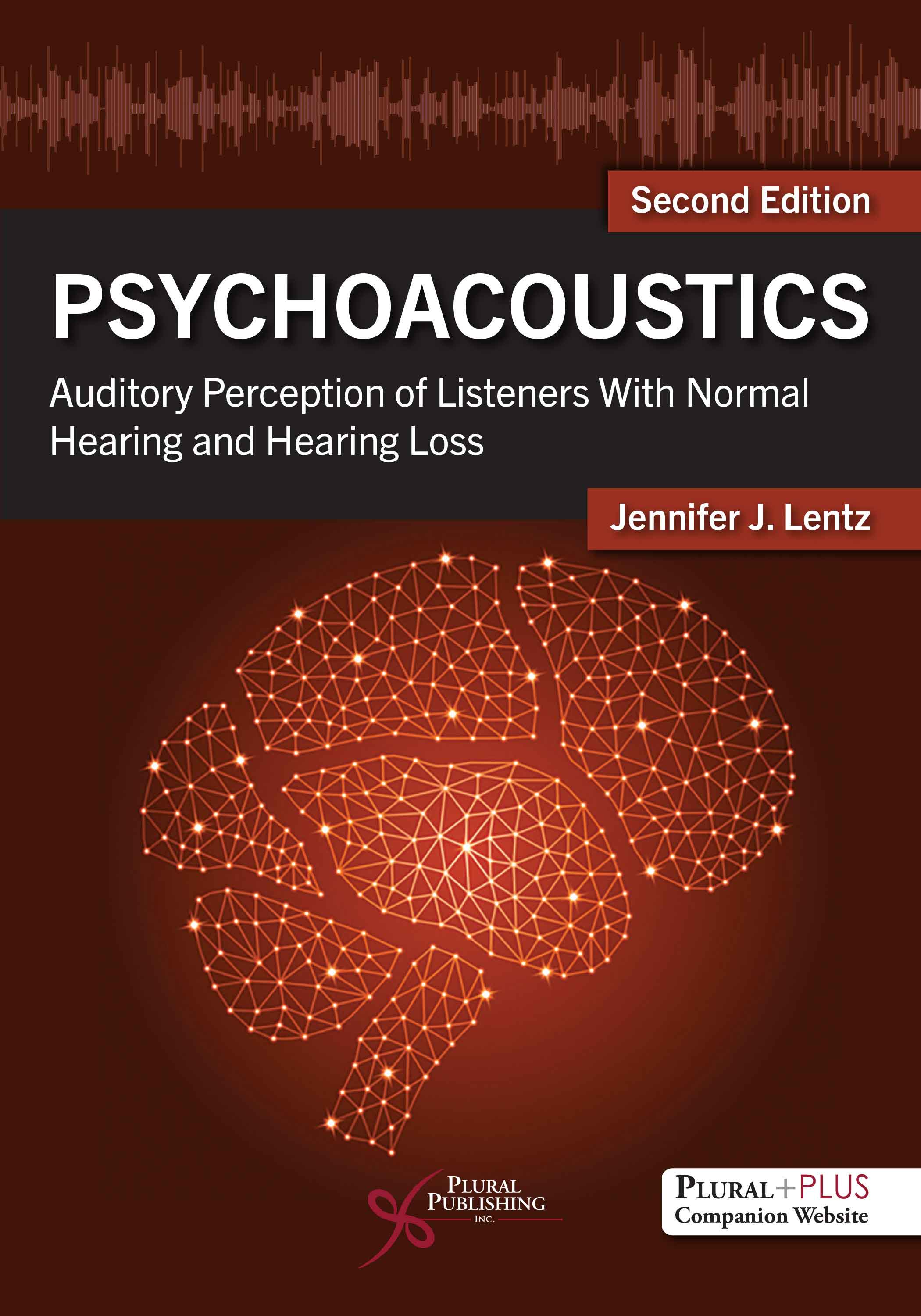
Psychoacoustics: Auditory Perception of Listeners with Normal Hearing and Hearing Loss
Second Edition
Jennifer J. Lentz
Details: 275 pages, B&W, Softcover, 7" x 10"
ISBN13: 978-1-63550-525-2
© 2025 | Available

